Soul Revival: 70 Years of Mad River Glen
Photos by Jeb Wallace-Brodeur
The Single Chair rises into oblivion. The beat from the base area—Grateful Dead today—fades slowly and strains of jazz and blues build as the chair moves toward Midstation. There Brian Aust, lift attendant and ornithologist, has his playlist blaring from speakers powered by a solar array, built for him by another Mad River skier and shareholder.
Aust nods as my chair rumbles on past his shack and on into the clouds. Quiet sets in. The world narrows to the dense hemlock and birch that line the sides of the trail. Two ravens circle directly above. I can hear skiers calling to each other somewhere off to the right, then nothing. At that moment I realize how rare this has become, silence.
Getting off the chair, I wipe my goggles but the fog is too dense to see much. Ahead, Eric Friedman, Mad River’s colorful and plain-spoken spokesperson, has disappeared, diving down into the powder stashes of Paradise. Weaving through the trees, I follow blindly, skiing by Braille, feeling the mountain, its bones and bumps and its supremely sweet, deep, soft spots underfoot.
We eventually come back to more open trails. At one point, Friedman points to a grove of saplings, “I think we’re the only ski area that actually plants trees in the middle of their trails,” he says. “The goal is for the canopy to cover them—that both protects the snow and keeps the ski area out of sight.”
As ski resorts around the country have Botoxed their trails (blasting them wide and, sending them straight down the mountain), built terrain parks to mimic the natural rolls and then “gladed” the remaining patches of forest in between, Mad River has left nature pretty much alone. Here, trails meander over ledges and skirt ravines and waterfalls. The trails are not necessarily difficult, but they make you pay attention to an occasional exposed granite backbone, and encourage you to keep the spring in your knees.
Blessed with this year’s early natural snow, Mad River skis like the best tree run you can find in Vermont, but with less puckerbrush. There is no “out-of-bounds” here and few closed trails. If you know where to go, you can meander off Antelope and find your way to a cold beer at the Mad River Barn, a.k.a the 19th hole. But there are also plenty of forgiving, meandering blue-square runs. Basically, Mad River is less “ski it if you can” than ski it where you can, and, most importantly when you can.
Seventy years ago, Roland Palmedo didn’t want to develop another Stowe when he carved out a ski area here. Even then, he envisioned Mad River Glen as the antidote to what skiing was becoming.
The Origin Story
“I remember watching them build Mad River and putting in the lift towers” says Steve Joslin, an eighth-generation Vermonter. “We lived off Bridge Street in Waitsfield, up the hill from my dad’s feed store, and would drive up the dirt road in his Pontiac to watch. Route 17 was all dirt then and farmers could make money using their horses to haul skiers whose cars got stuck in the mud.”
More than a decade earlier, Palmedo, a Lehmann Brothers investment banker who had skied in the Alps, had pored over topo maps and decided that Mt. Mansfield might have good terrain for skiing. Long before there were lifts, he and his New York friends skied the old logging roads and woods above Ranch Camp, and he eventually helped underwrite the Mt. Mansfield Lift Co.’s first chairlift at Stowe in 1936.
As Stowe’s ski area was developed, various business interests clashed. Palmedo, a Navy pilot who had seen two World Wars, and friends Charlie Lord and J. Negley Cooke began exploring south along the Green Mountains for a new place to ski.
They flew over, hiked and skied General Stark Mountain, elevation 3,637 ft. In a letter to Palmedo that Mary Kerr quotes in her excellent history, A Mountain Love Affair: The Story of Mad River Glen, Cooke wrote: “We had the most wonderful time skiing on Stark Mountain,” and “the snow is equally good at every altitude as on Mt. Mansfield and the skiing possibilities are much greater.”
Palmedo hiked nearly every inch of the terrain, looking for its natural contours. Together with Lord, the Vermont highway engineer who had laid out Stowe’s trails, they mapped and cut the mountain’s five original trails: Fall Line, Catamount, Lift Line, Porcupine and Grand Canyon. Mad River Glen opened Dec. 11, 1948. Of the last two trails, The New York Times wrote at the time, “No old fashioned ‘tubes through the forest,’ these two trails still retain the variety and appeal of trails as opposed to open slopes.”
By the time he was in eighth grade, Joslin was working at the new ski area as part of the crew that packed the trails. “We sidestepped down the mountain to groom trails,” he remembers. His mother baked pies that were sold at Tex Thompson’s restaurant at the Basebox (as the base lodge is known). Joslin’s father, Riford, worked at Mad River Glen’s ski shop. On some weekends he helped set up cots at the Waitsfield High School, which became a ski dorm. Occasionally, Riford slept there, to keep the coal-fired boiler going. Joslin’s ex-father-in-law Howard Moody was the first manager of Mad River Glen before Jack Murphy took over.
Palmedo had founded the Amateur Ski Club of New York in 1931, one of the first ski clubs in the country. Soon, the Amateur Ski Club had a building next to the base to lodge its members. Gradually, Palmedo sold off more lots around the mountain to other clubs, a half-dozen of which still have lodges there.
The UnResort
“Roland Palmedo was probably the first ski resort developer,” says Friedman as we ride the double chair, one of five lifts that serve the 53 trails, 115 acres of mapped terrain and 800 acres of tree skiing. “He sold off tiny lots and more than 70 houses were built around the mountain.”
For the most part, the houses around the mountain are small mid-century chalets and A-frames, tucked out of sight of the slopes. “For better or for worse, Palmedo was a little too ahead of his time and he sold off most of the land. Because of that, there’s no room left for big hotels or a base lodge, a waterpark or even a big parking lot,” Friedman notes.
The one big parcel of land that is still available is a plot of 800 acres, just south of the resort. It is land that Steve Joslin’s great-grandparents once owned, adjacent to the Mad River Barn and Annex. Today, it remains in the hands of the woman who has had the biggest impact on Mad River’s “modern” history: Betsy Pratt, now 90.
Truxton Pratt, a banker and pilot from Greenwich, Ct. and his wife Betsy bought a vacation home in the Mad River Valley in 1954. Then in 1972, along with real estate developer Brad Swett, who had visions for a base village, condos and more lifts, they bought Mad River Glen.
Three years later, Truxton died at age 49. Betsy rolled up her sleeves, bought Swett out and started her 20-year-reign, presiding over the ski area and her hostel, the Mad River Barn, in a dusty blue coat and earning a reputation as a maverick not to be messed with.
“I hate the ski industry,’’ Pratt said in a 1989 article in The New York Times. “I’m not a member of the ski industry, I’m a steward of a mountain.”
Pratt’s mission was to preserve Palmedo’s vision. She carried on a tradition previous owners Les and Alice Billings had started of making Mad River Barn into a near-legendary lodge and watering hole, a place where ski bums made pilgrimages.
She reluctantly allowed snowmaking and she famously banned snowboarding. John Ayers, the patrol director who has been at Mad River for over two decades, recalls what led to the ban. “From 1986 to 1992, snowboards were allowed on the mountain. But riders kept swinging the Single Chair as they dismounted so much that we had to hire someone to catch it, so Betsy banned them from the single. One day, a group of snowboarders armed with a video camera confronted Pratt at the supermarket, questioning her decision and she got into it with them.”
As tensions escalated, the video shows Pratt turning to walk away with a final repartee: “We’re a ski area anyway so forget snowboarding.” And that was it. Since then, Mad River Glen (along with Utah’s Deer Valley and Alta) remains one of three areas that ban snowboards in the U.S.
Ski it If You Can
Driven less by a business plan than by gut instincts, Pratt realized early on who the Mad River Glen target was—and wasn’t. After meeting New York ad man Gerald Muro on a chairlift, she decided Mad River would be in Muro’s words “the first specialty ski area in the U.S.” In 1984, Muro’s red and white bumper stickers began to appear emblazoned with “Mad River Glen: Ski It If You Can.”
They sell for a dollar and the walls of General Stark’s Pub at the base are plastered with photos of the stickers shown in all parts of the globe—and beyond: the most famous shot is of astronaut Cady Coleman holding a sticker in the Space Shuttle.
The stickers helped articulate a reputation Mad River already had for turning out skiers whose names might not have made history but who could, literally, ski anything.
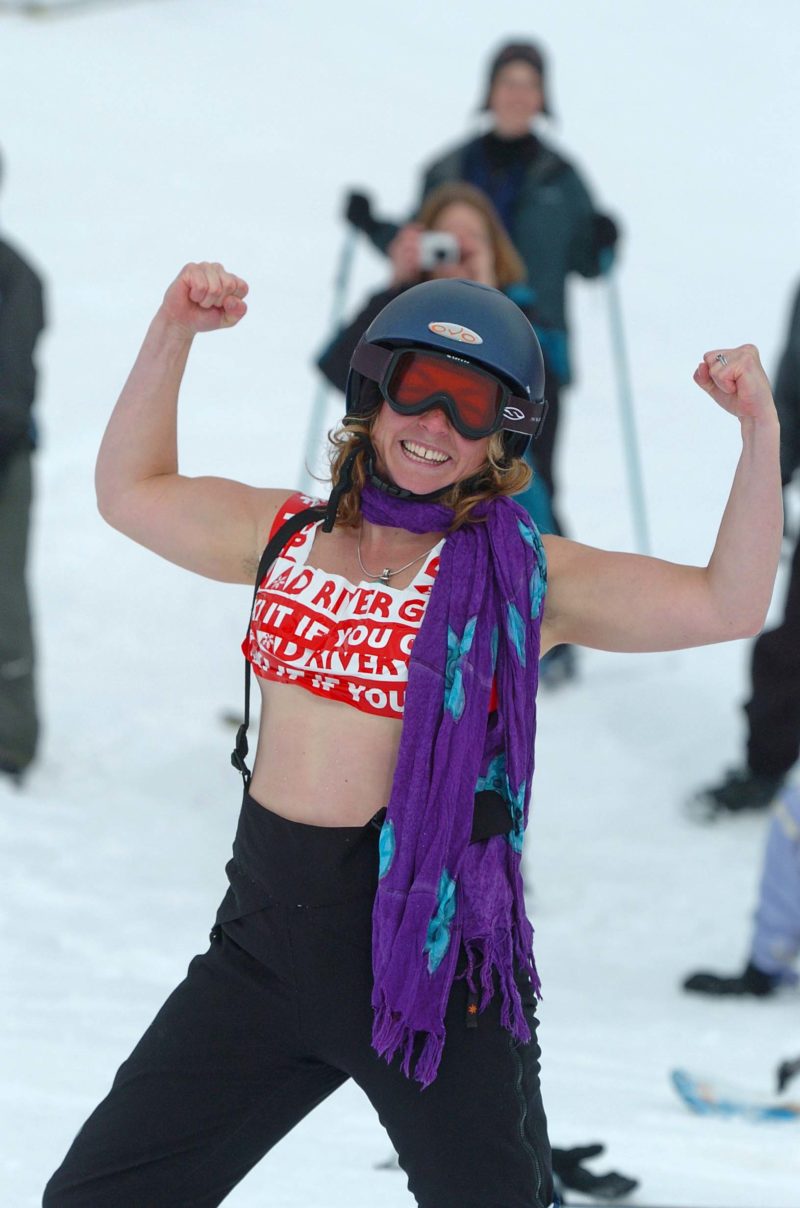
Part of the Triple Crown, the Vertical Challenge started as a way to see who could log the most vertical feet of skiing in a day, bell to bell, on the Single Chair. In 1999, Olympic downhiller and World Championship bronze medalist, Doug Lewis took on Tiger Baird, a Mad River Glen ski patroller and proprietor of Waitsfield’s Tiger Auto Repair. By the end of the day they had each logged close to 28 runs, or 57,036 vertical feet. Lewis edged Baird out by just 20 seconds on the final run.
After the new (faster) Single Chair went in, that record was upped to 31 runs and is held by Aidan Casner. The Triple Crown also includes a bump skiing and a freesking contest, challenging new generations of skiers to ski fast, send anything and land.
In 2011, three MRG skiers—brothers Lars and Silas Chickering-Ayers and Tom Runcie—took all three podium spots at the Subaru U.S. Extreme Skiing Championships at Crested Butte, Colo. The Chickering-Ayers brothers returned to help create a new generation of freeskiers, the Green Mountain Freeride Team, which included Mad River Valley local, Ryan Hawks. Hawks earned the nickname Flyin’ Ryan before a backflip off a cliff during a competition at Kirkwood, Calif. in 2011 tragically ended his life.
Today, Mad River Glen’s freeskiers continue to dominate. In January, 2019, when extreme skiing legend Glen Plake showed up to ski with the team he was impressed. “So often I’m looking over my shoulder to see who’s lagging behind. We had 40 kids screaming down after me and even the littlest was right there. Man, can those kids ski!” Plake said.
It Takes a Village… Or a Co-op
One of the kids Plake skied with in January was Meg Hourihan’s 10-year-old son, Ollie. “It was one of the best days for him ever,” says his mother. “Those kids are out there skiing every day, whatever the conditions are and to be able to ski with Glen was like a dream for him.”
Hourihan grew up skiing Mad River with her family, before moving out to the San Francisco Bay area where she co-founded Pyra, the company that launched Blogger, the personal blogging software. After selling the company, Hourihan was drawn back to Vermont and moved to Warren.
“What drew me back was that Mad River Glen has somehow maintained that spirit of what skiing is all about. It’s not a ‘ski resort’—it’s not about anything but the pure love of skiing, being in the mountains and having a good time, no matter the conditions,” she says. Hourihan has served on the co-op board and helped recruit Matt Lillard, the new general manager, from Eaglecrest, a community-owned ski area in Juneau, Alaska.
“The difference between Eaglecrest and Mad River Glen is there I had to please the 30,000 tax payers and here I have 2,000 shareholders in the co-op,” quips Lillard, who has also worked at Okemo and has served as a general manager at Magic Mountain.
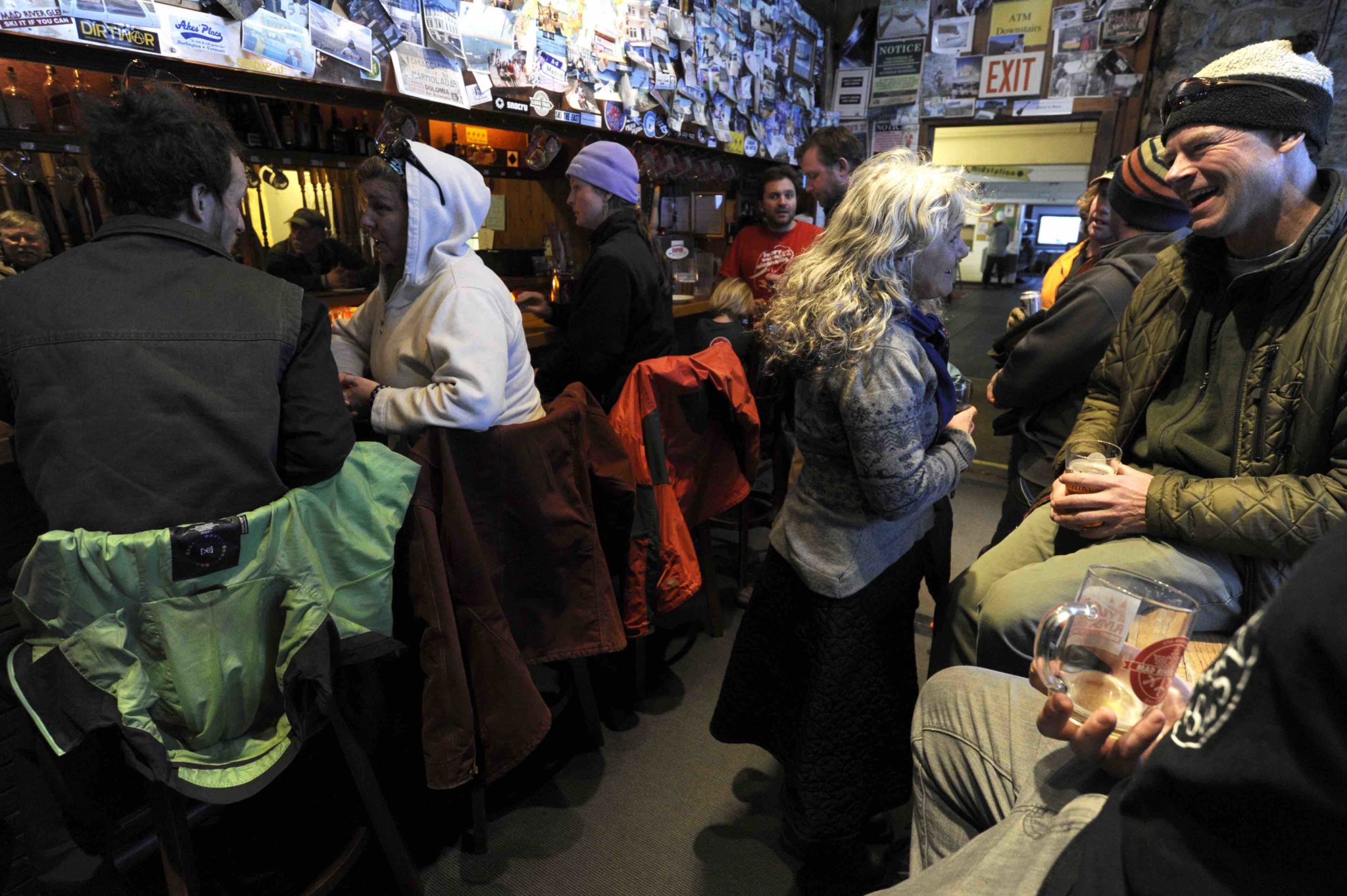
In 1995, rather than sell to American Skiing Company or one of the other ski conglomerates, Betsy Pratt did something unusual: she sold shares in Mad River Glen to herself and other skiers, creating the co-op structure that exists today. For $2,000 you can buy a share (with just $150 down). It’s the only co-op-owned ski area in the U.S.
“My husband gave me a share as a wedding present,” says Barclay Rappeport, a ski industry veteran who now leads e-commerce and promotion for Marker Dalbello Volkl, USA. “I liked the vibe that MRG gave off and knew that it was a more appropriate place for me to hang my hat than bigger resorts. I had previously worked at Stowe, Sugarloaf in Maine and Perisher in Australia. I wanted a place where our kids would be able to run wild and ski by themselves,” she says.
Rappeport, a co-op board member, remembers the discussion the co-op board had around replacing the old Single Chair with a new single—86 percent were in favor. “I think a lot of people really wanted to preserve the terrain and realized that if we kept the Single Chair, that would help.”
Instead of installing a new quad, the co-op, along with help from the Preservation Trust of Vermont and the Stark Mountain Foundation, replicated the old chair, right down to replacing the hemlock slats on the seats. (The new chair came with synthetic slats, which were removed and now form the flooring of the nature center). The $1.8 million was raised largely through donations and sales of the old Single Chairs. As you ride up the new chair, plaques on the towers and seat backs tell the story of who gave.
Today, the ski area is two-thirds of the way to raising $6.5 million through a capital campaign called Preserve Our Paradise. “There’s a lot of maintenance that needs to be done to the base area and snowmaking improvements [some of which have been done],” says Lillard. In 2018, a deck was added to the mid-mountain Birdcage and they plan other improvements at the base—“all in keeping with Mad River’s character,” says Friedman, who broadcasts a hilarious weekly local TV show, Mad River Today, from a corner table in General Stark’s Pub.
When I asked Barclay Rappeport what she would do if Mad River had the funding of other ski areas, say $40 million, she replied. “We’re not looking to build a posh Basebox, or put in escalators….just putting a little more room in the cafeteria, streamlining the ski school and ski patrol areas—simple things that don’t require double digit millions. Forty million dollars? That would just ruin it.”
As I head back to my car I notice a small van parked next to me in the parking lot with New Jersey plates. “Skied here before?” I ask the driver as he steps out. “Nope, I was supposed to come up with my son. He’s heard about this place and wanted to come ride the Single Chair—it’s like history to him,” the man says. “My son got sick, but I decided to see what it was like anyway,” he says.
And with that, he shoulders his skis and heads off across the dirt lot toward the Single Chair.
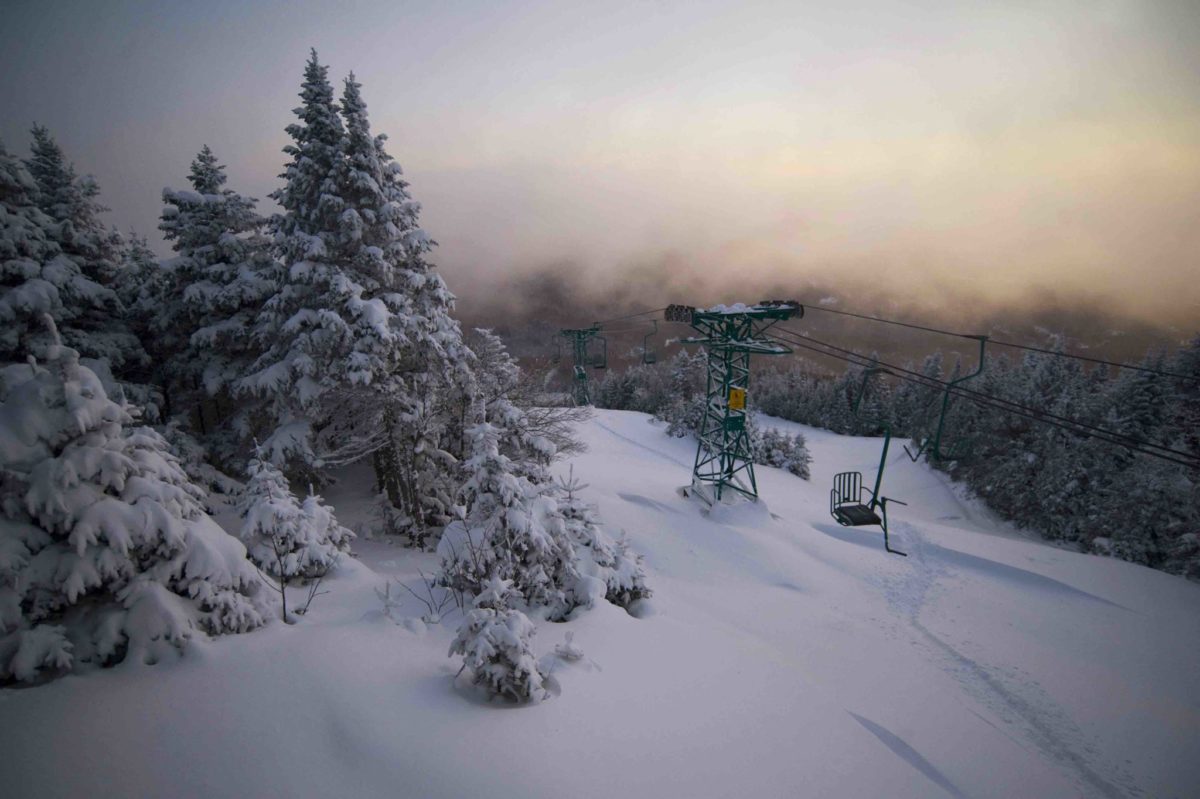

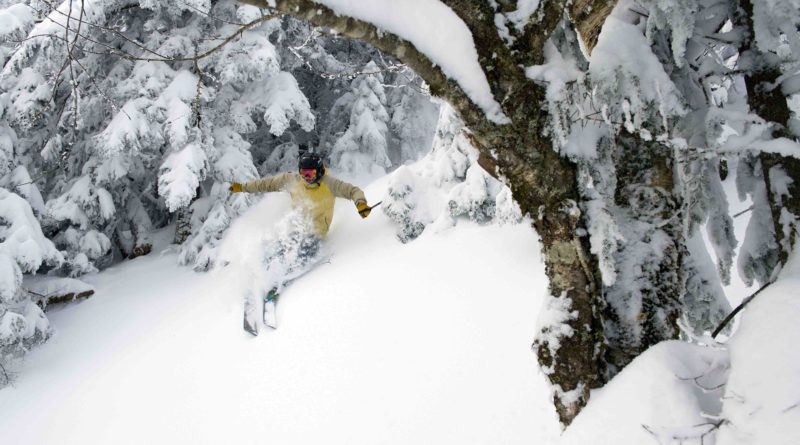
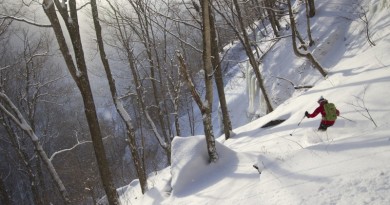
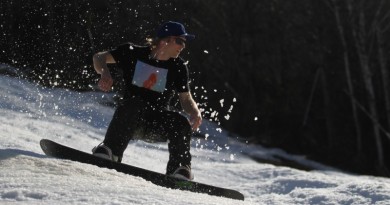
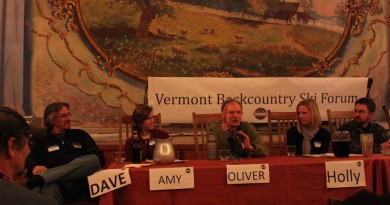
Terrific article, Lisa. Thank you.